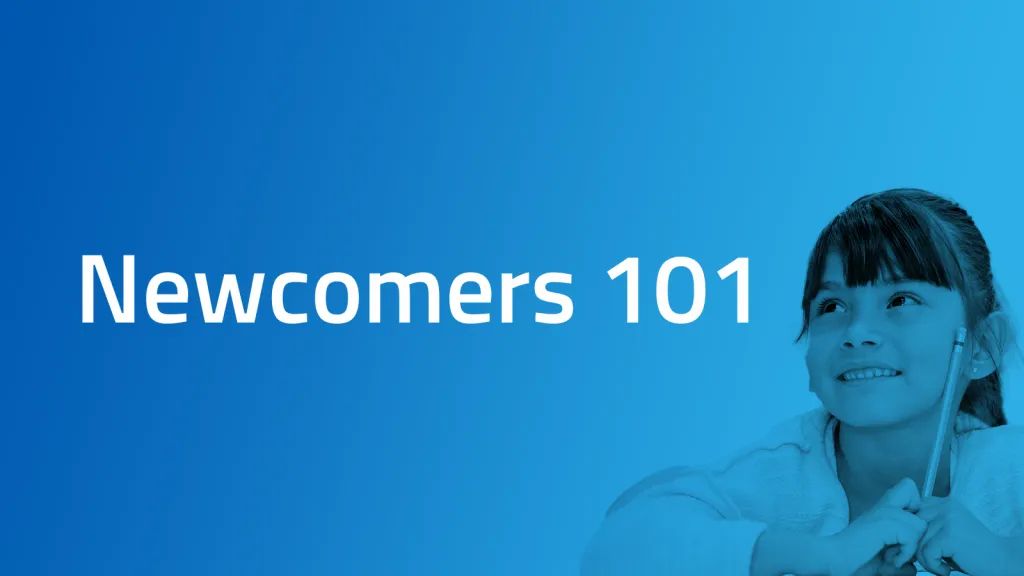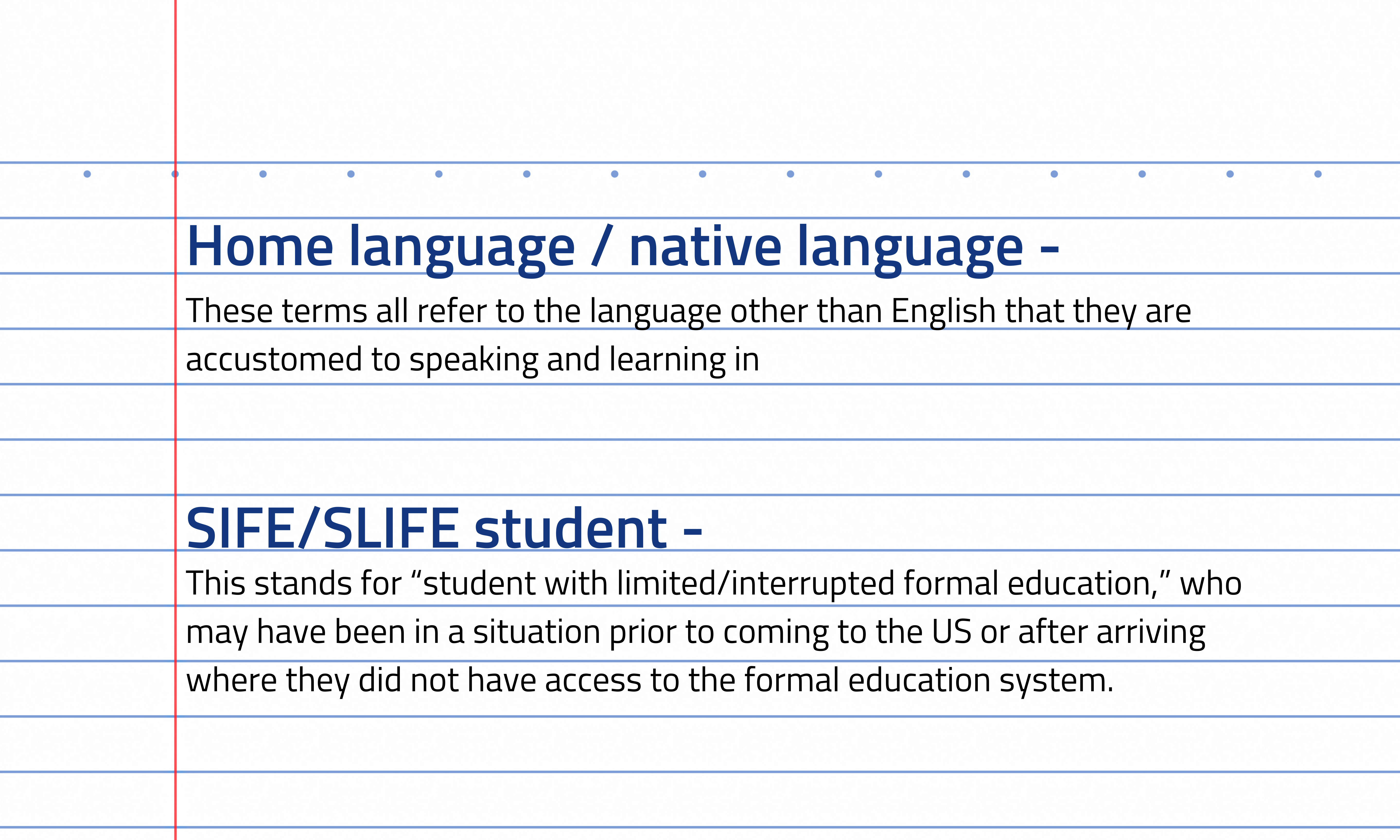Newcomer education: An introductory guide for teachers


Newcomer education: An introductory guide for teachers
Think of a time when you traveled to a foreign country and were surrounded by unfamiliar sounds, words, even street signs. Recall a school lesson where the content was completely over your head and the feelings of frustration and overwhelm you experienced. For newcomers in the US school system, these feelings are a daily reality. But there are a number of steps a teacher can take to reduce students’ anxiety and create a more welcoming, supportive environment where learning can happen.
Below is a guide to understanding and supporting newcomers designed for educators who may be working with this population for the first time or are looking to develop a deeper understanding of their students’ experiences.
What is a newcomer?
A newcomer is a student who has recently arrived in the US or was born outside of the US and is at emerging levels of English proficiency, requiring designated support for accessing content:
- A newcomer is a student who has arrived in the US in the last three years, according to the OELA Newcomer Toolkit. However, the exact number of years they’ve lived in the US is less important in determining newcomer status.
- Their English proficiency, both linguistically and instructionally, is key in determining if a student needs newcomer support.
Along with a clear understanding of what the term “newcomer” means, it’s also important to know some common terms associated with these students.

Within the “newcomer” umbrella, there is a range of experiences that students may have had with schooling. If you have or will soon have a newcomer student in your classroom, ask some discovery questions to learn more about the student, including what their schooling and living conditions were like prior to coming to your school and what language they did their fundamental learning in. Learning about their story will help you as their teacher better understand their experience and have a better idea of how to best support them.
Common challenges that newcomers face
The structure of the US school system is unique in ways we may not realize if we have done our entire education here, and can be confusing for newcomers. For example, it’s a uniquely US practice for students to change rooms for each class. For secondary students from other countries, they’re accustomed to their teachers coming to them. Take extra care to demonstrate or explain this to newcomers to the best of your ability, and consider pairing them with a buddy student to help with the transitions as well.
The values of the US public school system for student interaction, dialogue, and engaging in critical thinking are another characteristic that many students haven’t encountered in their own environments. Navigating a whole new value system can be challenging and take time to adjust to.
Managing expectations for students
A common initial stage for newcomers is the silent period, when students are in a phase of absorbing a lot of information and language and will likely be hesitant to speak. With proper support, you can help students eventually move out of that phase by offering low-stress, scaffolded speaking opportunities. Just make sure that your expectations are aligned to students’ unique experiences and realistic to their stages of language development.
Another stage for many newcomers happens a few months into their schooling experience, when they hit a mental wall and experience significant frustration. Those feelings you recalled earlier of sitting through a class where you didn’t understand what was being taught are what many newcomers experience all day long, week after week. Understandably, students eventually become exhausted from that constant effort. It’s important to be understanding of students in this moment and help them understand that it’s completely normal to feel that way and that it will get easier.
It’s easy for educators themselves to feel frustrated when navigating language barriers and cultural differences. As teachers, we feel immense responsibility for the success of all of our students and can grow discouraged when our efforts don’t seem to be helping them progress. But in situations where verbal communication is limited, it’s especially important to consider the iceberg theory: that what we see from a student in the classroom is only a small part of their story, and the more we work to better understand the whole student, the better we can support them.
Creating a welcoming and inclusive environment
We know that for students new to a school and to a country, surrounded by a language and culture that is in many ways unfamiliar to them, anxiety may be high. One of the simplest ways we can help reduce this doesn’t require a common language, but simply ensuring that your body language and facial expressions communicate that you are excited and happy to teach them.
The next way to help newcomers feel more comfortable is by focusing on learning the correct pronunciation of their names from day one. Ask for the right pronunciation, practice getting it right, and hold the other students and staff accountable as well. We want to show students that they don’t need to alter their identity to fit in.
Beyond those first few interactions, try a few strategies to support their language journey in your classroom. First, think through how your classroom is set up for collaboration - are students in groups, and are there opportunities for conversations when they’re ready?
Another key point to remember is that although we may teach in English, we are not creating an English-only classroom culture. While exposure to the English language is key for newcomers’ language learning, there is absolutely a place for home language support. Try translating materials into their home language when teaching a new routine, and offer the option for students to take their notes during lessons in whatever language they are most comfortable with.
What professional development opportunities exist for educators to enhance their skills in teaching newcomer students?
For educators looking to deepen their understanding of newcomers through professional learning, our Introduction to Newcomers module in the Ellevation Strategies “Supporting Newcomers” pathway is the best place to start. In completing the module, educators will build on knowledge of characteristics and unique challenges newcomers face, examine student data to identify newcomers in your class and their countries of origin, better understand the importance of creating a welcoming environment in your classroom, and select and teach with an activity from the provided catalog that supports newcomers’ sociocultural competence or linguistic progress.
This article was written in collaboration with Bret Gosselin, Ellevation’s own Instructional Content Manager. Bret Gosselin is an educator with nearly twenty years of experience as an ELD and newcomer teacher, district administrator for MLLs, and state agency leader. Currently, Bret dedicates his passion for linguistic and cultural equity by developing high quality professional learning through Ellevation Strategies.